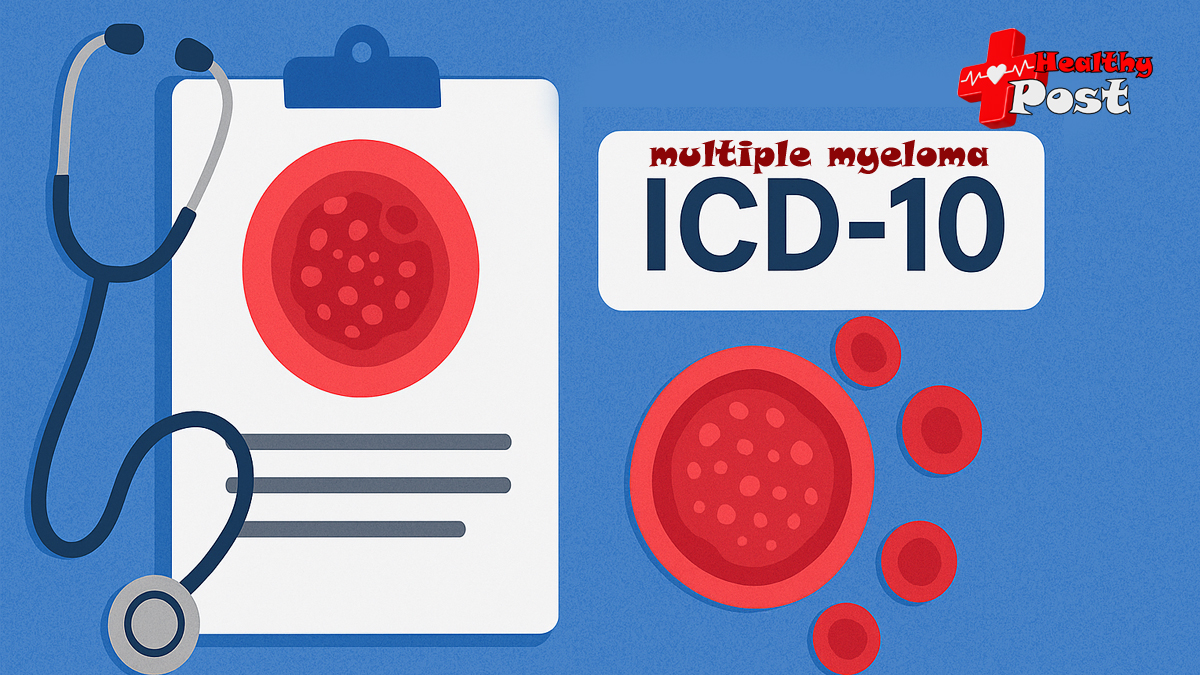
10 Must-Know Insights Into Multiple Myeloma ICD 10 for Better Diagnosis
Living with or learning about multiple myeloma can feel overwhelming. Between the medical jargon, codes, and procedures, it’s easy to get lost in details that don’t feel very human. That’s why today, we’re diving into a topic that blends the clinical with the personal: multiple myeloma ICD 10.
If you’ve ever wondered what those coding terms on medical records mean—or how they impact diagnosis, insurance, and care—this guide will break it down in a simple, supportive way. Whether you’re a patient, caregiver, or healthcare professional, understanding the ICD 10 code for multiple myeloma can make the journey a little less confusing.
📌 What is Multiple Myeloma ICD 10?
The term ICD 10 stands for the International Classification of Diseases, 10th Revision. It’s a global coding system used by doctors and hospitals to record diagnoses, track diseases, and process insurance claims.
For multiple myeloma, ICD 10 provides a specific code that ensures healthcare providers speak the same language when documenting and treating this condition. The standard multiple myeloma ICD 10 code is C90.0.
👉 This simple code has big importance: it connects diagnosis, treatment, billing, and research in one unified way.
🧩 Quick Reference: Multiple Myeloma ICD 10 Codes
Here’s a snapshot of how the codes look:
| ICD-10 Code | Condition |
|---|---|
| C90.0 | Multiple myeloma |
| C90.00 | Multiple myeloma not having achieved remission |
| C90.01 | Multiple myeloma in remission |
| C90.02 | Multiple myeloma in relapse |
This table shows how precise the coding system is—it even distinguishes between remission, relapse, and active disease.
🌟 10 Must-Know Insights Into Multiple Myeloma ICD 10
Now that you know the basics, let’s explore the 10 key insights that make these codes so important for better diagnosis and care.
1. It Standardizes Diagnosis Worldwide
One of the biggest benefits of the multiple myeloma ICD 10 code is standardization. No matter where a patient is being treated—New York, London, or Karachi—the code C90.0 means the same thing.
This consistency:
- Avoids confusion across hospitals and countries.
- Ensures accurate record-keeping.
- Helps patients transfer smoothly between providers.
💡 Real-life example: If a patient moves from the U.S. to Canada, the ICD 10 code ensures doctors instantly understand the diagnosis history.
2. It Supports Insurance and Billing
Healthcare costs can be overwhelming, but the right code makes sure patients receive coverage for their care.
- Insurance providers rely on ICD 10 codes to approve treatments and reimburse hospitals.
- Without the right code, claims could be delayed or even denied.
- Using C90.0 or related sub-codes ensures treatment aligns with diagnosis.
👉 In short, the ICD 10 code for multiple myeloma acts like a financial passport for care.
3. It Helps Track Remission and Relapse
The detailed structure of ICD 10 codes allows doctors to track progress:
- C90.00 → no remission yet
- C90.01 → remission
- C90.02 → relapse
This helps create a clear timeline of the patient’s journey, which is essential for treatment planning.
💬 Imagine: You’re celebrating remission. Having the ICD 10 note “C90.01” in records makes sure every healthcare provider acknowledges your progress.
4. It Improves Research and Clinical Studies
When researchers study cancer patterns, they rely on ICD 10 codes. Knowing exactly how many patients were diagnosed with multiple myeloma (C90.0) helps:
- Identify survival rates.
- Develop new treatments.
- Compare remission and relapse data.
📊 Example: A study may find that 40% of patients coded as C90.01 (in remission) maintain remission for more than five years—data that gives patients real hope.
5. It Supports Global Health Monitoring
Health organizations like the World Health Organization (WHO) track diseases worldwide using ICD codes. This data helps:
- Detect rising trends in multiple myeloma.
- Allocate funding for treatment programs.
- Plan better healthcare policies.
🌍 In other words, when your doctor records the multiple myeloma ICD 10 code, it’s not just about you—it’s part of a bigger picture that improves global cancer care.
6. It Reduces Medical Errors
Clear coding prevents mix-ups. Without ICD 10, two different doctors might describe the same patient’s condition differently. With codes:
- Records are precise.
- Miscommunication is minimized.
- Patient safety improves.
✨ For patients, that means greater peace of mind—knowing that whether you’re in remission or relapse, your records say it clearly.
7. It Connects to the History of Multiple Myeloma ICD 10
The coding system has a long history. Before ICD 10, older versions like ICD 9 were used. However, they lacked detail.
- ICD 9 lumped many cancers into broad categories.
- ICD 10 refined this, giving multiple myeloma its own precise subcategories.
- Today, this history of multiple myeloma ICD 10 helps doctors learn from past cases while improving modern care.
8. It Helps Doctors Communicate Across Specialties
Multiple myeloma often requires a team of specialists: hematologists, oncologists, radiologists, and nurses. The ICD 10 code creates a common language for all.
- No need for long explanations—C90.0 says it all.
- It reduces stress for patients, since care feels more coordinated.
9. It Plays a Role in Treatment Planning
Doctors don’t just diagnose—they plan treatment around ICD codes. For example:
- A patient coded as C90.00 (not in remission) may begin chemotherapy.
- If coded as C90.01 (in remission), maintenance therapy may be chosen instead.
📌 The code doesn’t replace personalized care, but it guides decision-making.
10. It Empowers Patients to Be Informed
Finally—and most importantly—knowing your multiple myeloma ICD 10 code helps you take charge of your health.
- You can ask better questions.
- You’ll understand medical paperwork more clearly.
- You’ll feel more in control of your care journey.
💪 Knowledge is power. And in the fight against multiple myeloma, every bit of clarity matters.
📊 Visual Aid: Remission vs. Relapse Tracking
Here’s a simple comparison chart:
| ICD-10 Code | Status | What It Means for Patients |
|---|---|---|
| C90.00 | No remission | Active treatment required |
| C90.01 | In remission | Maintenance or monitoring |
| C90.02 | Relapse | Treatment plan adjustment |
This helps patients and caregivers quickly understand what each stage looks like in practical terms.
✅ Conclusion: Why Multiple Myeloma ICD 10 Matters
At first glance, medical codes may feel cold and impersonal. But as we’ve seen, multiple myeloma ICD 10 is far more than just numbers—it’s a tool that brings clarity, support, and connection to patients worldwide.
By standardizing diagnosis, improving research, guiding treatment, and empowering patients, the ICD 10 code for multiple myeloma plays a vital role in the journey of care.
So the next time you see C90.0 on a report, remember: it’s not just a code. It’s a key that opens doors to understanding, treatment, and hope.
✨ Takeaway: If you or a loved one is navigating multiple myeloma, don’t hesitate to ask your healthcare team about the ICD 10 code in your records. Being informed is one of the most powerful steps you can take toward better care.

